'Thor: Ragnarok': Your mighty guide to every Easter egg, callback, and in-joke
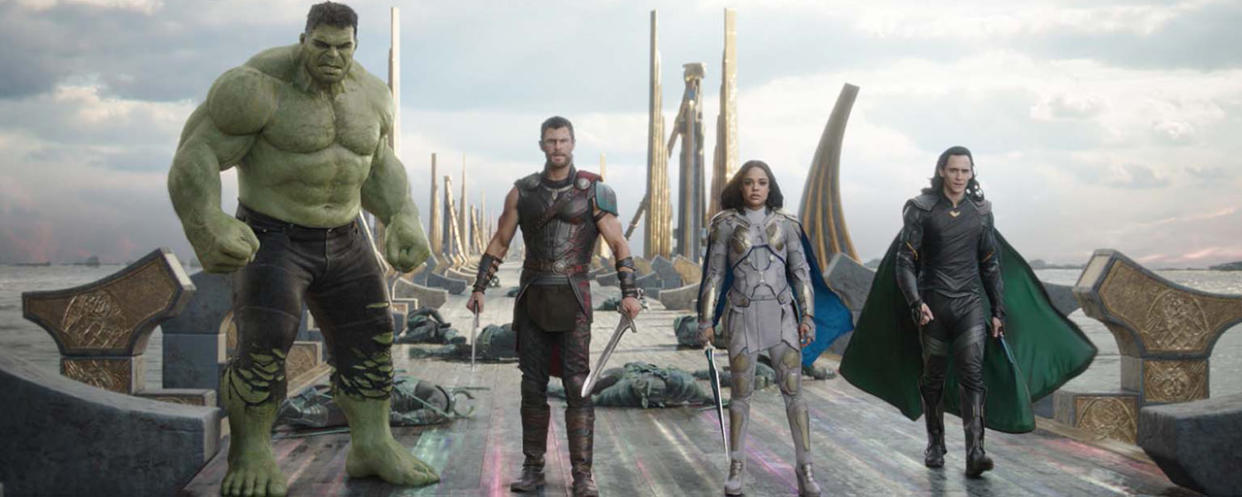
Warning: This post contains major spoilers for Thor: Ragnarok
With Kiwi cutup Taika Waititi at the helm, it’s no surprise that Thor: Ragnarok is the flat-out funniest Marvel movie yet. But there are still plenty of surprises built into the film in the form of Easter eggs, callbacks, and deep-cut in-jokes. Yahoo Entertainment’s geek squad combed through Ragnarok for this spoiler-filled explainer guide to the Asgardian thunder god’s third solo adventure, from the opening moments to the closing credits sequences. And now that you’re in the know, you’ll want to see — and laugh along with — the movie all over again.
The story within the story
The most meta moment in a movie loaded with them comes early on, when Thor (Chris Hemsworth) returns to Asgard to witness ne’er-do-well stepbrother Loki (Tom Hiddleston) in disguise as their father, Odin (Anthony Hopkins), rapturously applauding a theater troupe. The company is putting on a re-creation of the “death” of Loki from Thor: The Dark World. As if that weren’t layered enough, the casting of the ensemble is remarkable: Matt Damon, who played a character named Loki in the Kevin Smith film Dogma, plays the ersatz Loki; Luke Hemsworth, Westworld enforcer and brother of Chris, plays Thor; and Sam Neill, who starred as a father figure in Waititi’s 2016 New Zealand-based comedy Hunt for the Wildepeople, plays Odin. Encore.
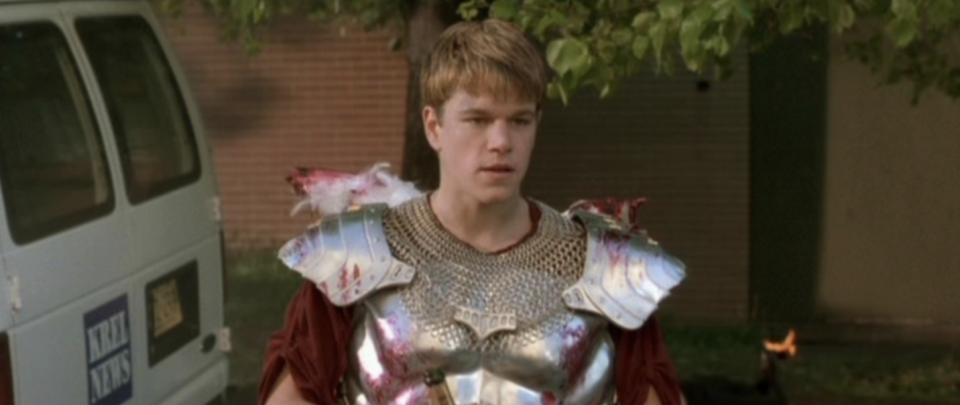
Throg
During the aforementioned Loki passion play, as the dying god of mischief confesses his myriad sins, he apologizes for turning Thor into a frog. That actually happened in the comics; along the way the amphibian Thor befriended another human turned frog, who, after recovering a piece of Mjolnir, became the pint-size hero known as Throg.
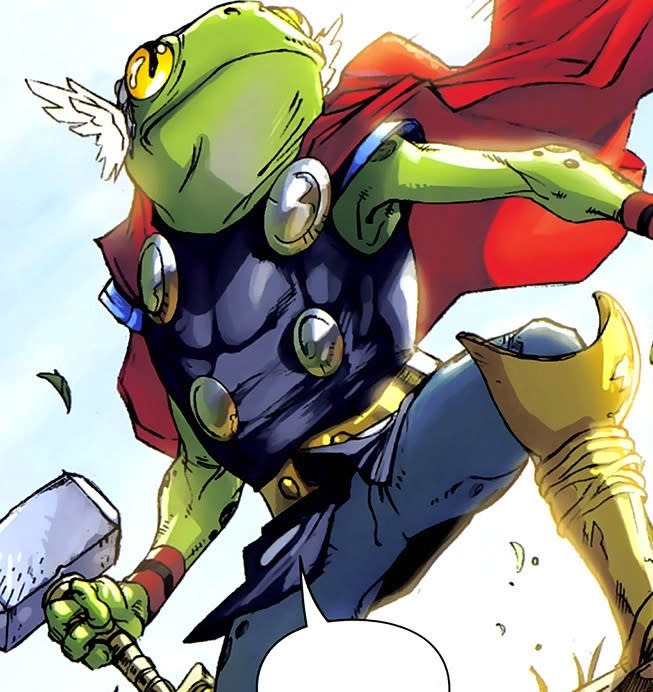
On the down low
When Thor and Loki visit Earth to consult with Doctor Strange (Benedict Cumberbatch) to find their missing father, they assume disguises. Marvel fans will instantly recognize that Thor has transformed into a version of his comics alter ego, Donald Blake (who was Jane Foster’s ex-boyfriend whose identity Thor borrowed in the first film), and Mjolnir has become an umbrella (in the comics it’s a walking stick).
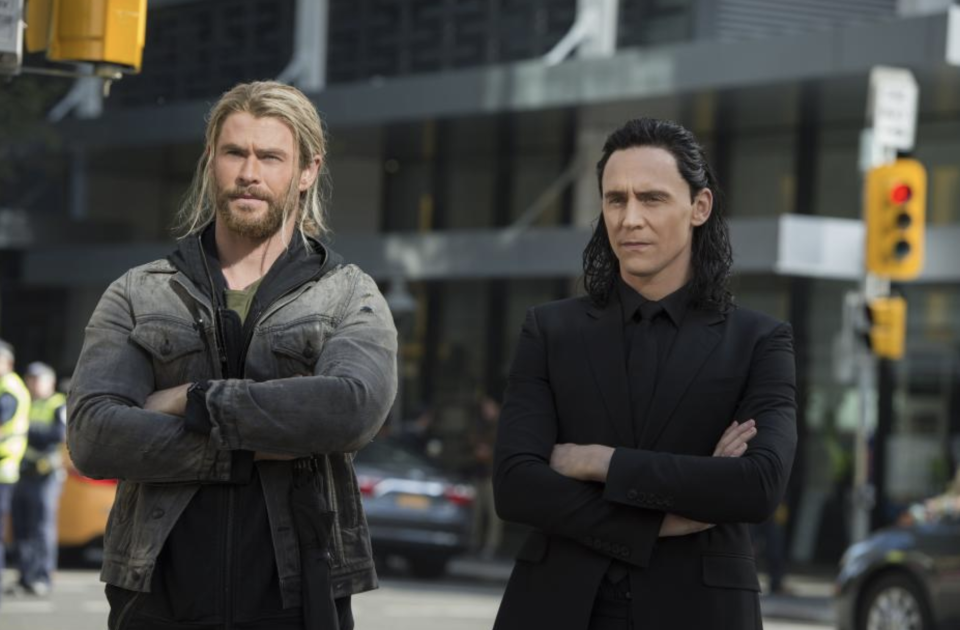
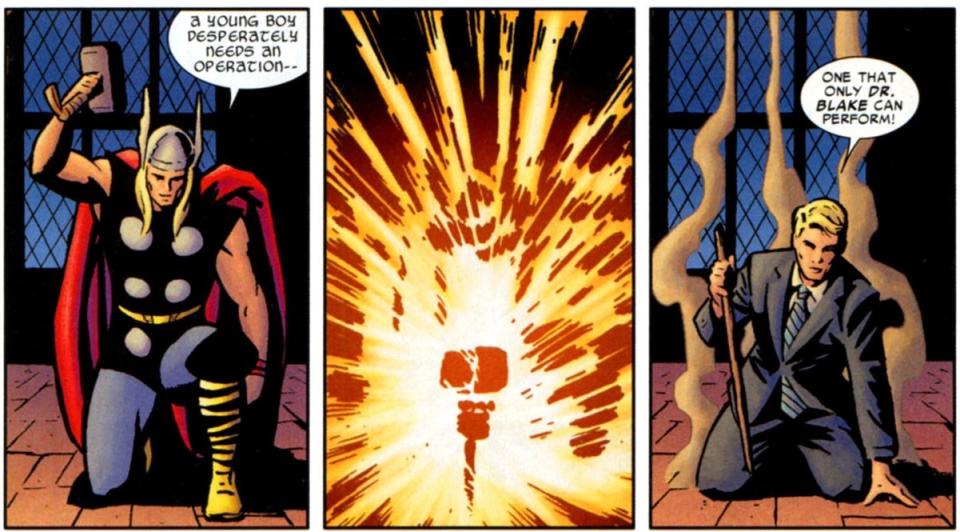
Hela different
Talk about your awkward family reunions: Previously unaware that they had a third sibling, Thor and Loki meet their sister, Hela (Cate Blanchett), for the first time in the wake of papa Odin’s death. In place of hugs for her long-lost brothers, Hela offers only destruction, reducing Thor’s hammer to rubble and bringing the end times to Asgard.

Cate Blanchett as Hela in Thor: Ragnarok. (Photo: Marvel Studios)
To be fair, she’s only fulfilling her function as the goddess of death! Hela was also a troublemaker in her original comic-book form, making life difficult for Thor and Odin since her introduction in 1964, two years after the thunder god joined the Marvel universe. While her Jack Kirby-designed look is remarkably consistent from page to screen, the big difference is her parentage: Comic-book Hela claims Loki as her father, who sired her prior to a previous Ragnarok. Now we desperately want a father-daughter comedy starring Hiddleston and the eternally youthful-looking Blanchett.
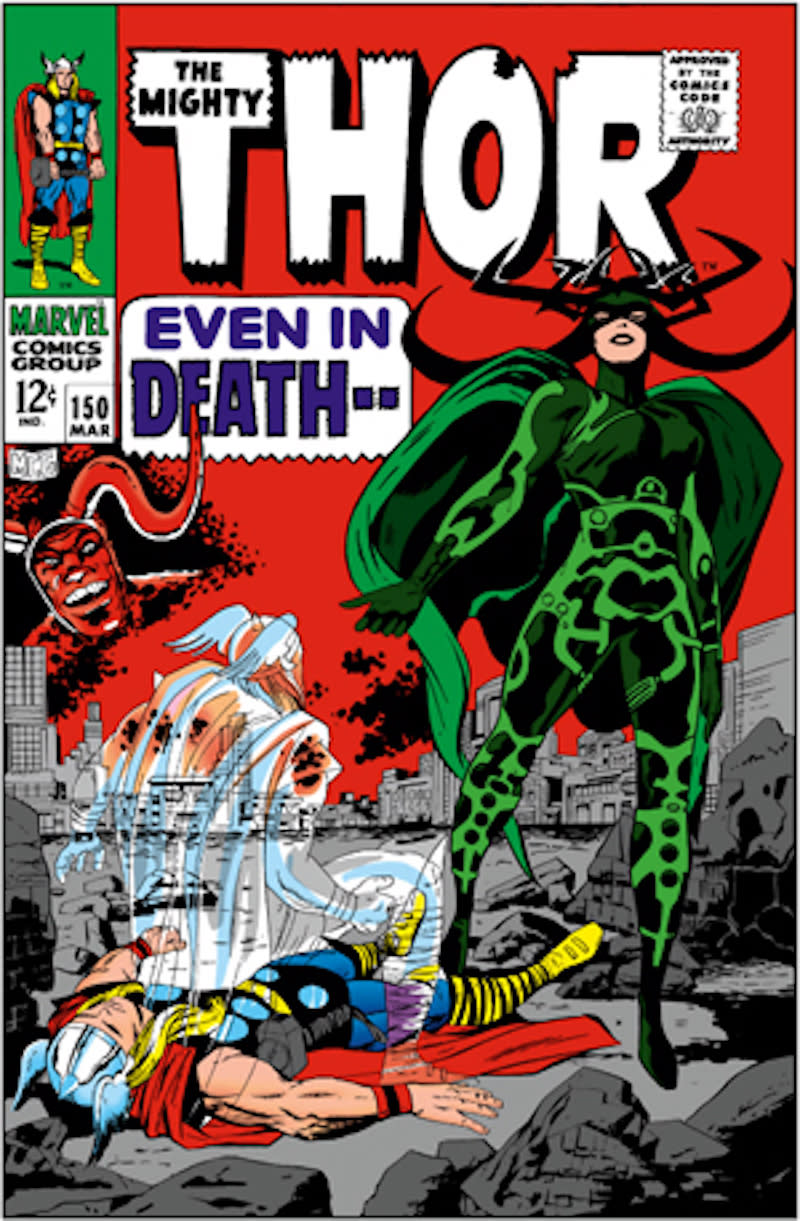
Hela isn’t the only character whose origin has been slightly tweaked in the page-to-screen translation. Skurge (Karl Urban), for instance, is much more of a reluctant villain than he is in the comics, where he went by the name the Executioner and faithfully served the powerful sorceress Amora, aka the Enchantress. Those two even enlisted in the all-star villain ensemble, the Masters of Evil, which frequently tangled with the Avengers. (Both comic Skurge and screen Skurge also have an affinity for high-powered firearms.)
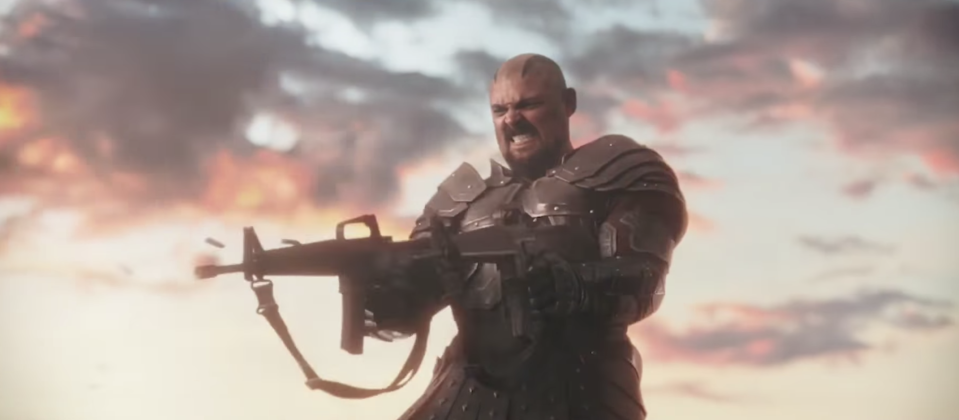
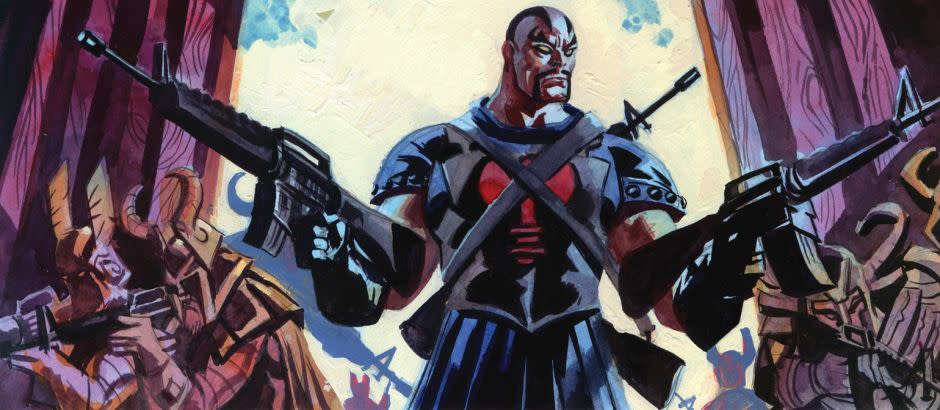
Tessa Thompson’s Valkyrie, meanwhile, is the latest in a series of makeovers that character has had since her introduction in 1970. “It was an idea of mine to get a female Thor type,” legendary Marvel writer and editor Roy Thomas tells Yahoo Entertainment. “She turned out to be a secret identity of the Enchantress, who was already a character. But I liked the idea of her, and brought her back for a second time in an issue of The Incredible Hulk.” Issue No. 142 to be exact, which is referenced in Ragnarok when Thompson’s Valkyrie — who is in hiding on Sakaar after a devastating fight with Hela — is addressed by her call sign: “Scrapper 142.”
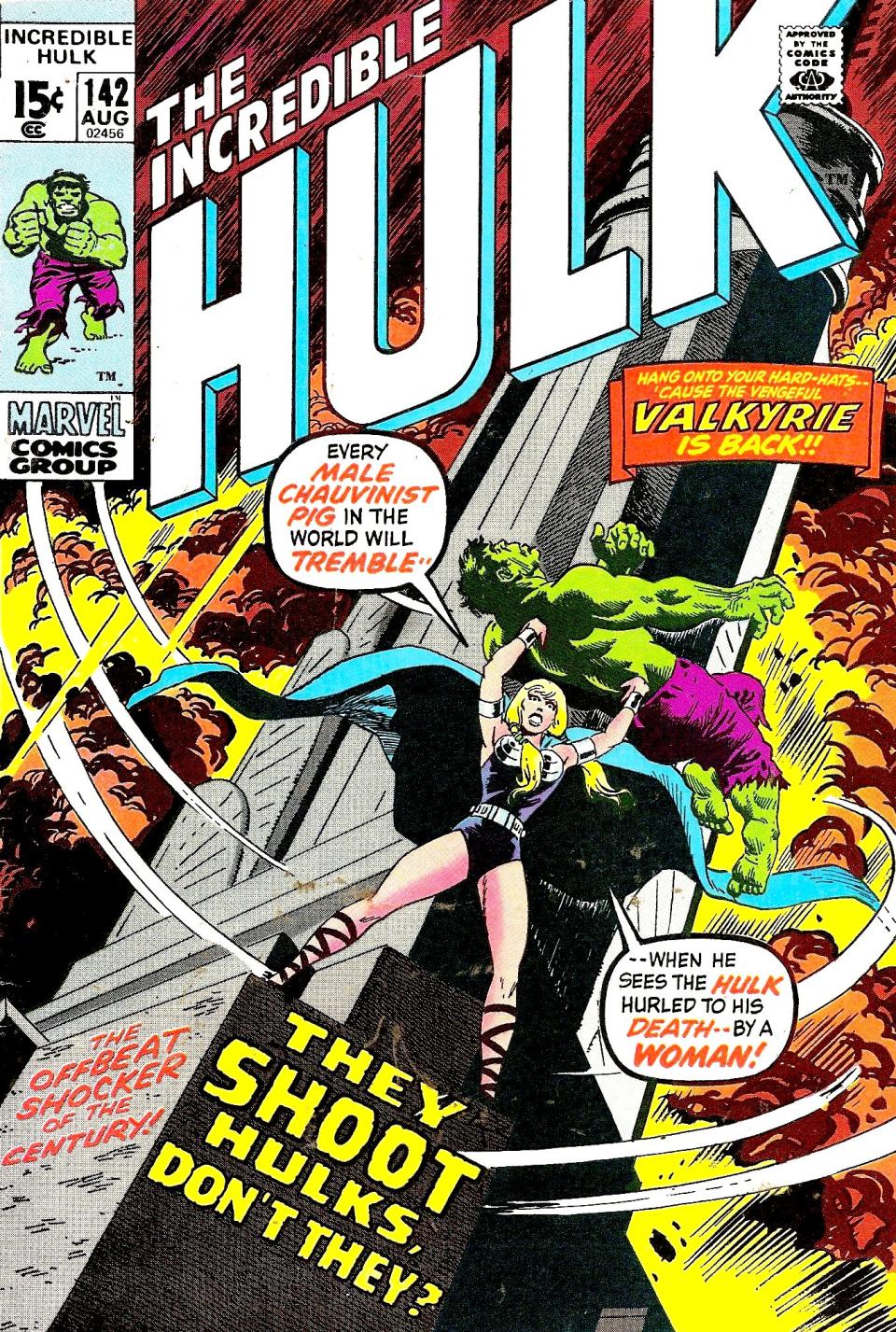
(And for those who are wondering, the female warrior who rescues Valkyrie from the massacre was intended to be her lover — according to Thompson, she pushed for additional backstory to honor the comic-book Valkyrie’s relationship with anthropologist Annabelle Riggs, which Waititi filmed but wound up cutting for time.)
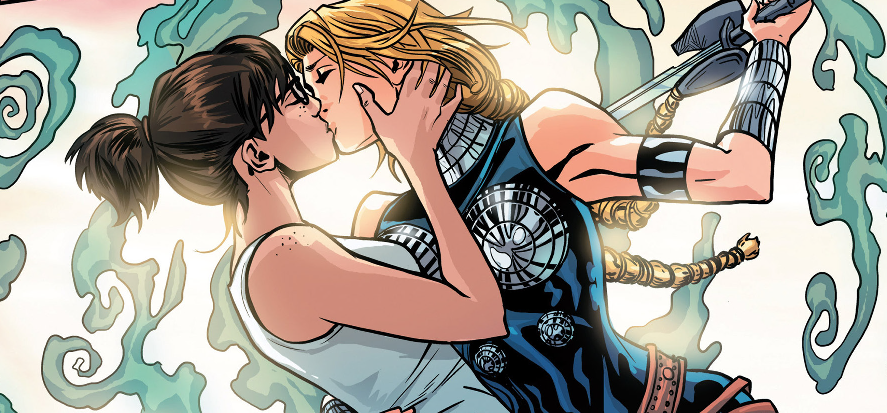
Not for nothing, Thomas also created another one of Ragnarok‘s scene-stealing supporting characters, the Grandmaster, played to Jeff Goldblum-ish perfection by … Jeff Goldblum. Named for the highest rank one can achieve in chess, the Grandmaster was conceived of by the writer as a consummate gamesman. “If the Grandmaster isn’t involved in some sort of game, then he doesn’t have much reason to exist,” Thomas says, laughing. “In the comics, he was introduced [in 1969] as being involved in this game with Kang the Conqueror, which ended up introduction the Squadron Sinister.”
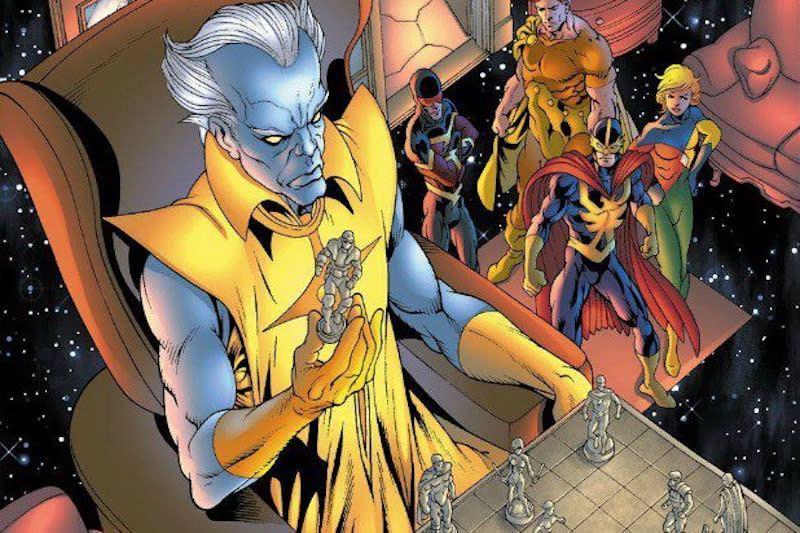
Those games continue in Ragnarok, with the Grandmaster overseeing the gladiatorial combat that provides the residents of Sakaar with some much-needed entertainment. It goes without saying that Goldblum (who tells Yahoo he painted his finger- and toenails blue in homage to the comic character’s original skin tone) gives the character a massive upgrade in cool.
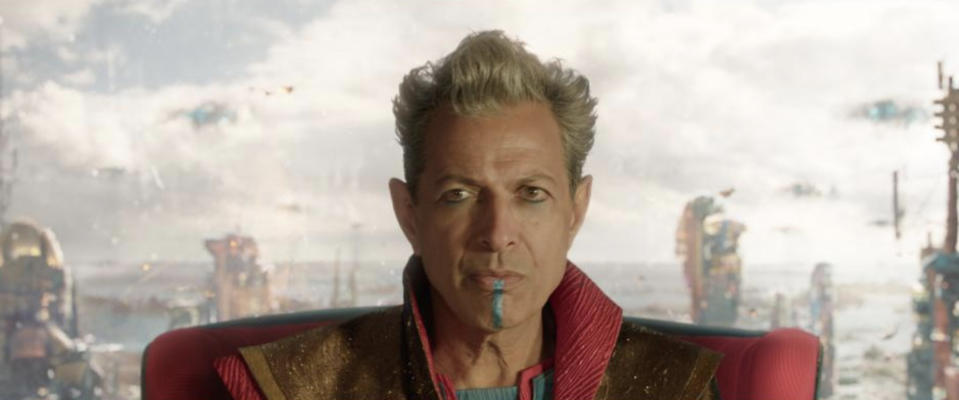
In both the comics and the MCU, the Grandmaster is the brother of the Collector (played by Benicio Del Toro in Thor: The Dark World and Guardians of the Galaxy).
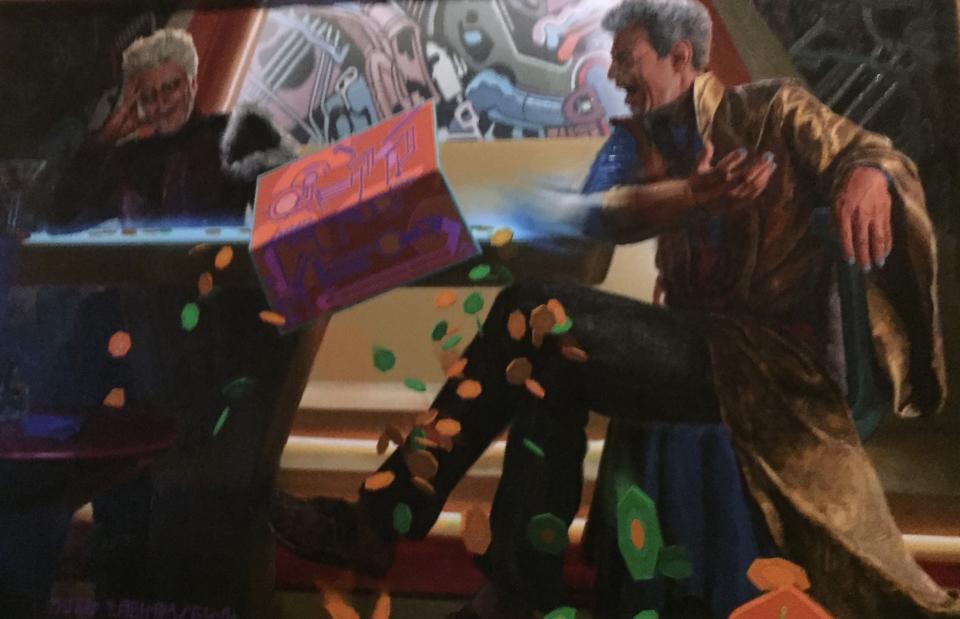
Stan Lee spotting
Yes, the Marvel maestro, who may be a cosmic being, makes his requisite cameo in Ragnarok, appearing as the psychotic Sakaarian barber who shears Thor’s golden locks before he goes into battle.
Contest of Champions
The Grandmaster’s gladiatorial games derive their name from this classic 1982 comic, which saw the Grandmaster challenge the female embodiment of Death in a high-stakes competition involving teams of rival heroes.
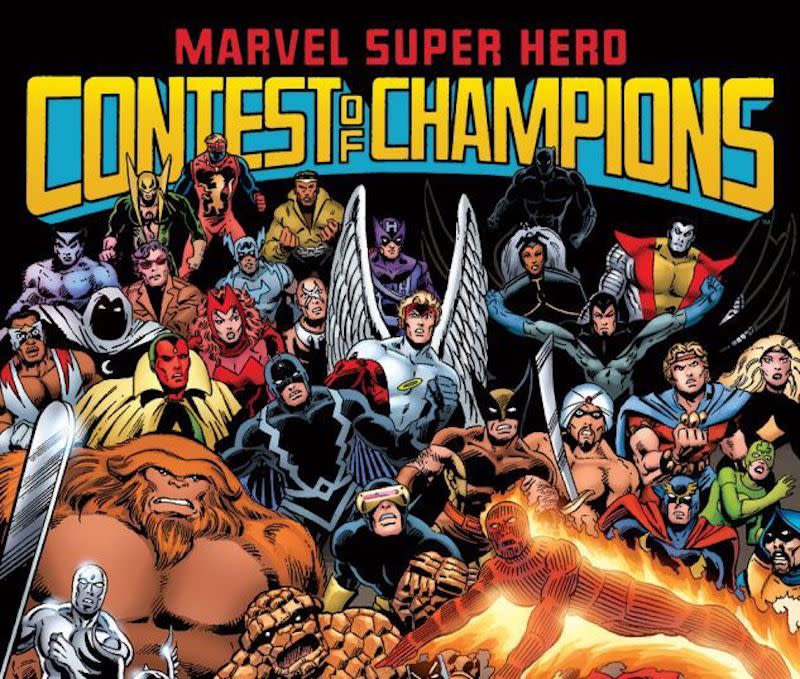
To honor his champions, Goldblum’s Grandmaster erects a giant tower on Sakaar featuring the faces of his reigning warriors. In the film, Hulk’s countenance is being added alongside other recognizable Marvel heroes. At the top is the dimension-hopping swamp denizen Man-Thing (or perhaps it’s the “She-Man-Thing” who once competed in Grandmaster’s Contest of Champions in the comics); then Marvel’s version of Ares, the god of war who frequently clashed with Thor in the comic (DC’s version happened to be the big bad in last summer’s Wonder Woman … coincidence?); Bi-Beast, the two-faced Hulk foe; and Beta-Ray Bill, the alien hero worthy enough to wield Mjolnir.
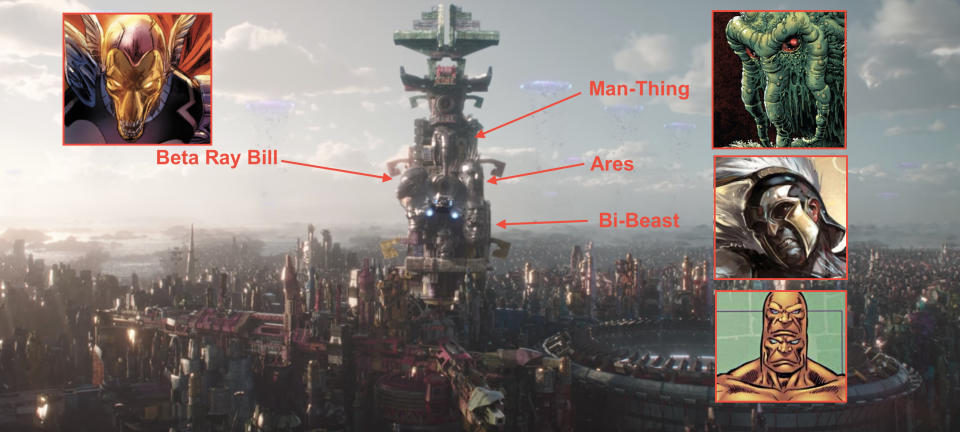
Hulk and his smashing friends
In case you couldn’t tell by now, Thor: Ragnarok is a pastiche of several Marvel arcs, including Ragnarok itself. Another one of its key inspirations: Planet Hulk.
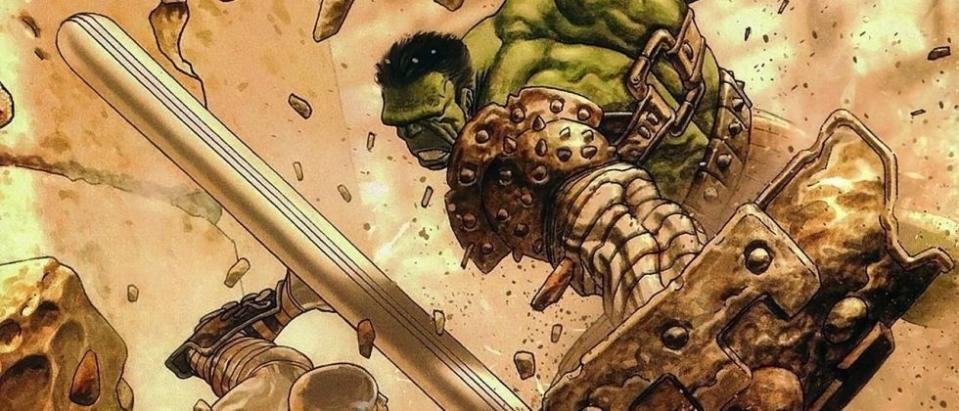
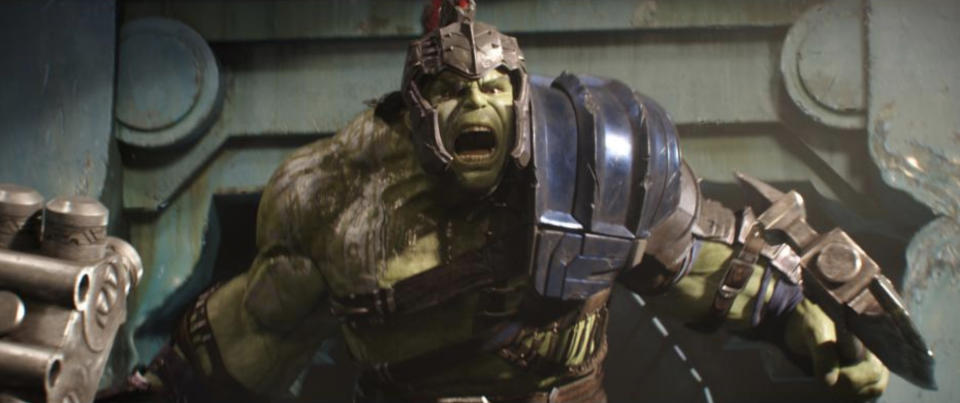
The 2006 storyline saw the Hulk sent off Earth by the Illuminati (Iron Man, Black Bolt, Doctor Strange, and Mister Fantastic) after destroying Las Vegas. Their intention was to send Hulk to a peaceful planet, but his shuttle instead crash-landed on the planet of Sakaar (unlike in the film, the Grandmaster was MIA from the comic). From there, the armor-clad Hulk begins a Conan the Barbarian-esque adventure with his fellow gladiators, which include Korg and Miek (two of Ragnarok‘s scene-stealing aliens), battling their way through fighting pits before ultimately conquering the world.
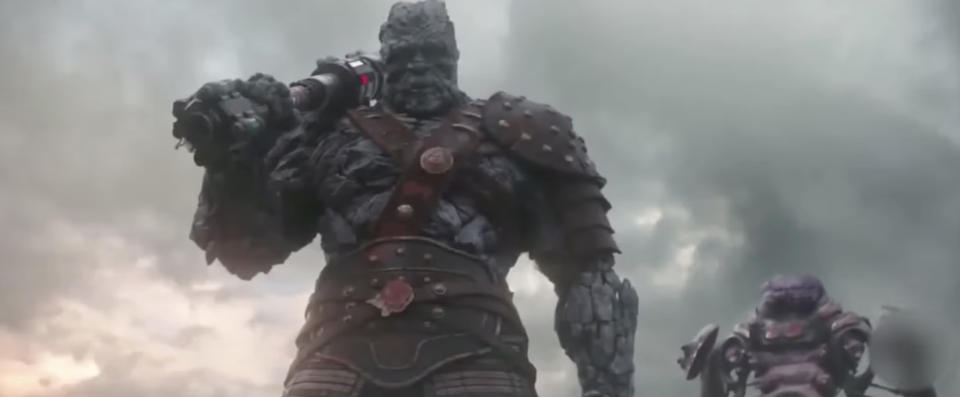
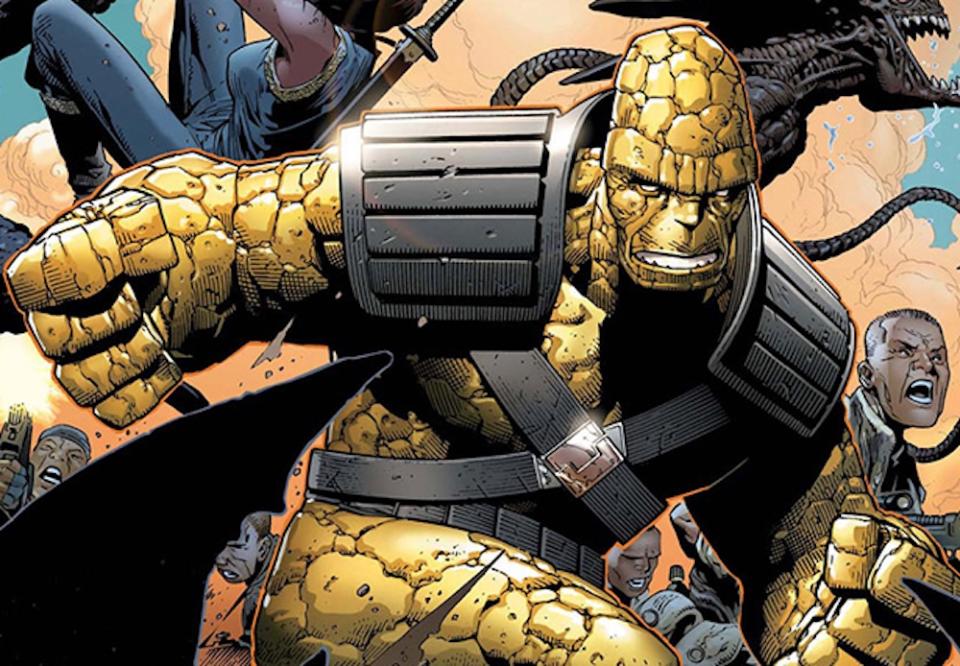
If Korg looked familiar, that’s because one of his species, Kronans, not only appeared (and was summarily smashed by Thor) in Thor: The Dark World — they also debuted in the same comic that introduced Thor to the Marvel Universe, Journey into Mystery No. 83 (1962).
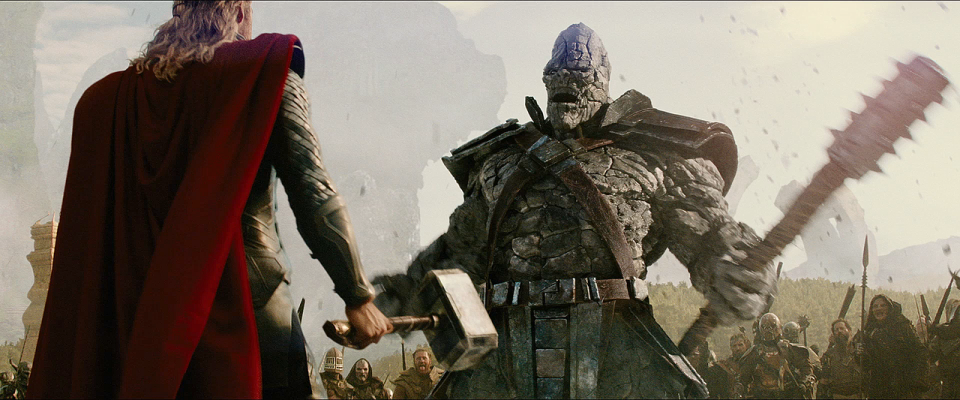
Infinity Gauntlet redux
If there’s one thing we’ve clearly established, it’s that fans love Easter eggs. What they don’t love is when those Easter eggs cause major continuity issues. One of the earliest Easter eggs in the Marvel Cinematic Universe was a blink-and-you-miss-it glimpse of the Infinity Gauntlet in Odin’s armory in Thor. (For fans unfamiliar with the Infinity Gauntlet — who are you and what are you doing here? — it is the near-omnipotent metallic glove holding the six powerful Infinity Stones worn by the Mad Titan, Thanos.)
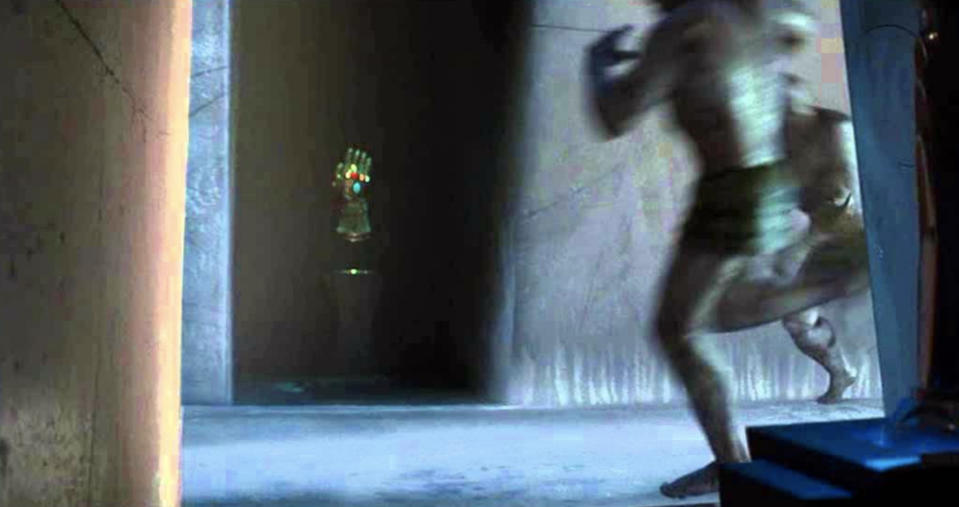
Back in 2011, a year before The Avengers assembled, the Infinity Gauntlet cameo in Thor thrilled fans just for the sake of being there. So when The Avengers revealed that the Tesseract (aka the Cosmic Cube) — first seen in Captain America: The First Avenger — was not only an Infinity Stone, but that it was Thanos pulling Loki’s strings, the Gauntlet’s cameo in Thor raised some serious continuity issues. If the major McGuffin in every MCU installment from Guardians of the Galaxy to Doctor Strange was an Infinity Stone, then how could the Infinity Gauntlet be in Odin’s armory? As the Comic Book Guy might sneer: “You can’t actually expect us to believe there are TWO Infinity Gauntlets?”
Well, Thor: Ragnarok answers that question in one fell swoop when Hela enters Odin’s armory, pushes over the Gauntlet, and shouts, “Fake!”
Running with the devil
Hela may be the harbinger of the apocalypse, but it’s Surtur who actually wields the fiery sword that reduces Asgard to rubble. (He’s also the only creature capable of bringing death to the goddess of death.) Like everyone in Marvel’s version of Asgard, the character has its roots in Norse mythology, where he was known as Surtr, the leader of the fire giants.

As realized onscreen, Surtur is literally on fire, in a performance that combines Taika Waititi’s motion-capture-enhanced body movements with Clancy Brown’s voice. Thor confronts Surtur on the demon’s home turf of Muspelheim, and is imprisoned for his troubles. And even though he escapes and brings Surtur’s crown — the source of his world-destroying powers — with him, by the end of the film, he all but begs his adversary to bring around Ragnarok as a last-ditch means to defeat Hela.
One-eyed kings
No wonder Thor sought to avoid ascending the Asgard throne: Losing an eye is apparently a prerequisite to becoming king. Like his eye-patch-wearing old man, Odin, Thor ends Ragnarok minus an eyeball. It’s a nod in the direction of the King Thor we meet in Thor: God of Thunder, a series that splits its time between the main Marvel universe and an alternate future where mankind has been extinguished and an ancient Thor wearily keeps the peace.
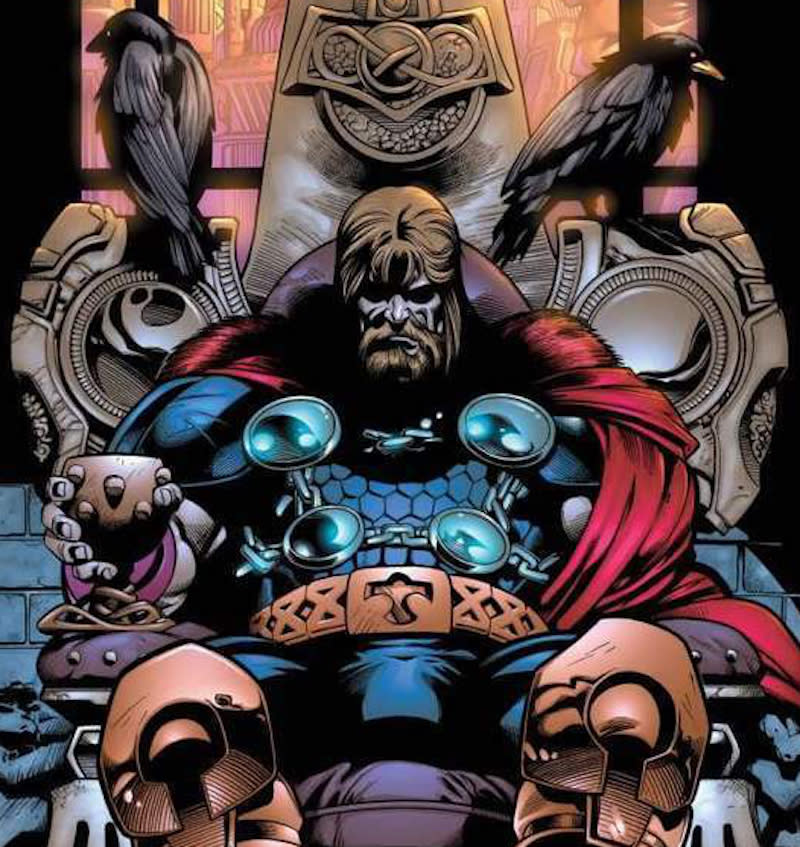
His missing eye is also a development that Marvel kept well-hidden in all the marketing materials for Ragnarok, as well as Thor’s next appearance in Avengers: Infinity War. Footage screened at San Diego Comic-Con this past summer showed that Thor still had double vision, as did the Infinity War trailer screened at D23 Expo and SDCC. You can chalk that up to the magic of F/X; it’s very likely that any digital eye surgery had yet to be performed on that footage.
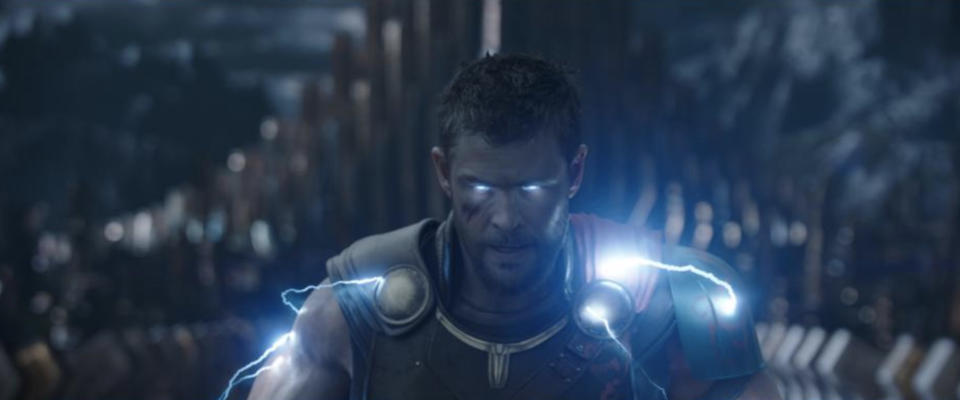
Attentive viewers noted that Ragnarok itself went through some significant visual tweaks between the earliest teasers and the finished product. For example, the scene where Hela crushes Mjolnir takes place in an entirely different location in the theatrical version — a grassy Norwegian field (which was actually filmed in Atlanta) versus a city backdrop.
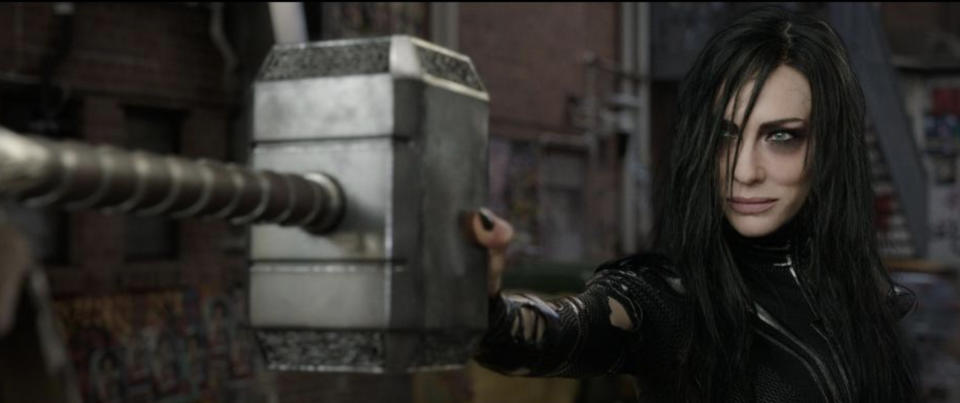
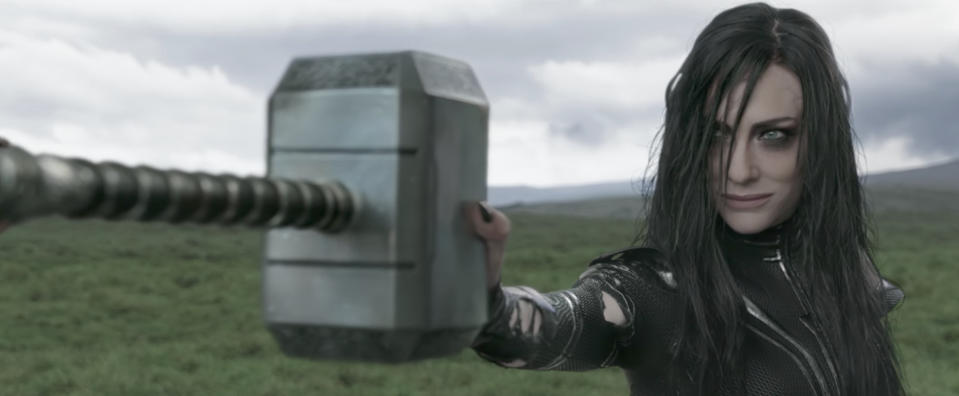
So don’t be surprised if Thor’s eye patch makes its debut in the first official Infinity War trailer, especially given where one of Ragnarok‘s post-credits sequence leaves our new king. (More on that below.)
That vision thing
If you haven’t rewatched Avengers: Age of Ultron recently (and we don’t really recommend that you do), you might not remember that Thor ditched his work friends midway through that movie after being afflicted by Scarlet Witch-induced visions of a looming disaster on his home world. Suddenly finding himself in the center of an Asgardian party/orgy, he’s approached by his buddy Heimdall (Idris Elba), who speaks ominously of Thor leading his people “to hell.” This was the first tease we had of his planet’s looming demise, although the real Ragnarok plays out very differently than Thor’s hallucinations. Not only was there no mention of Hela or Surtur, but Thor saves his subjects rather than condemning them to a fiery fate after learning his father’s lesson that “Asgard is a people, not a place.” Also, the real Heimdall proves a lot more helpful during the actual apocalypse than his taunting counterpart in Thor’s vision.
Other Ultron-related callbacks do pay off though. The Quinjet that Hulk piloted off-world at the end of that movie, for example, has been sitting on Sakaar while he’s been off becoming the people’s champ. When Thor climbs aboard and blows the dust off the controls, he activates Black Widow’s farewell video to her brutish beau, which aids his transformation back into Bruce Banner. And going even further back in the MCU timeline, Loki’s face turns a shade of green when he sees Hulk in the Grandmaster’s arena, thinking back on the time that the Hulk pulverized the “puny god” in the first Avengers team-up.
To boldly go where no god has gone before…
Waititi has peppered his film with pop-culture references that extend beyond Marvel’s comic books. There’s Damon playing Loki for the second time. And a Hemsworth channeling another Hemsworth. The retirement home where Loki stashes Odin is called Shady Acres, not unlike the one in South Park. Perhaps our favorite moment is when Chris Hemsworth sits in the captain’s chair of Thor’s ship at the end and looks awfully comfortable — just as he did in his breakout role as Captain Kirk’s doomed father, George, in J.J. Abrams’s Star Trek.
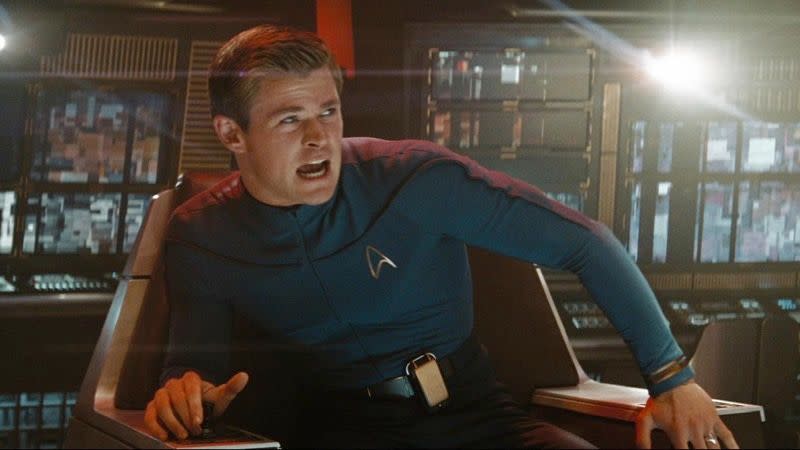
To Infinity and beyond!
There’s technically still one more Marvel movie — February’s Black Panther —between Ragnarok and Avengers: Infinity War, which invades theaters in May 2018. But the midcredits scene that caps off Thor’s third (and maybe final?) solo adventure feels like the opening salvo in that looming intergalactic conflagration. Having transformed a Sakaaran spaceship into a kind of Noah’s Ark, the young king of the now-destroyed Asgard is leading his subjects to a new home on Earth. Despite the horror of watching their home destroyed by Surtur’s fiery sword, the Asgardian people have placed their faith in Thor, who is equally optimistic that Midgard will be ready to welcome a flood of extraterrestrial refugees … even if one of them — that scamp Loki — previously tried to take over the world. “Everything’s going to work out fine,” the Thunder God tells his mischievous sibling.
Thor’s sunny disposition fades, however, when his one eye gazes out at the star-filled expanse in front of him and instead sees a giant ship blocking the path forward. The crew aboard that vessel doesn’t identify itself, but all signs — including the weapons and basic structure — point to it being the flagship of would-be galaxy conqueror Thanos (Josh Brolin). Indeed, Marvel Studios boss Kevin Feige has confirmed that the ship is called Sanctuary II (Sanctuary also being the name of Thanos’s home planet), and the Mad Titan is onboard.
After merely musing about wanting the six Infinity Stones, and their accompanying gauntlet, for several movies now, Thanos is at last taking forceful steps to recover each of the gems, including the one that may be on Loki’s person. Earlier in the film, while Thor is busy fighting Hela, he sneaked into the storage room where Odin kept his wares to recover Surtur’s crown. En route to that object, he comes across the Space Stone-powered Tesseract that he used for nefarious purposes in The Avengers. While we don’t see him actually pick up the device, it’s safe to assume he couldn’t resist pocketing it for future mischief-making.
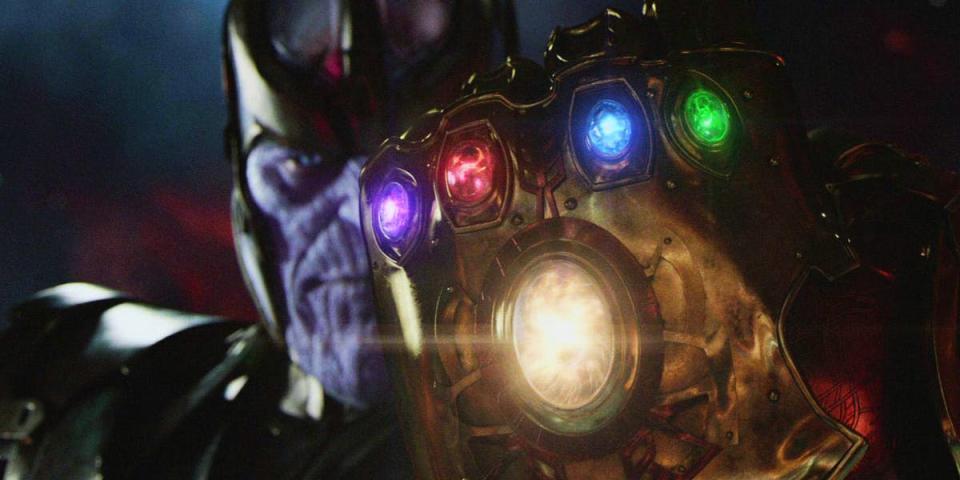
Jump back to the midcredits sequence, and the last thing we see is Thanos’s ship looming large over Thor’s comparatively tiny one. As lucky Comic-Con attendees discovered this past July, this final shot links up to the very first shot of a yet-to-be released Infinity War trailer, which finds the Guardians of the Galaxy discovering the Asgardian king’s body floating in space, his ship and subjects gone. That trailer apparently also confirms that Loki does indeed have the Tesseract, which means his allegiances are still far from certain as the core Avengers — along with the Guardians, Dr. Strange, and Spider-Man — get ready to confront Thanos.
Goodnight and drive safely
One person who probably won’t be fighting in the Infinity War (on either side) is the Grandmaster, recently toppled from his lofty perch atop Sakaar’s power structure. As the post-credits stinger reveals, though, the master gamer is still trying to rig the board in his favor. Discovered by the planet’s rebellion-minded public hiding in one of the many junk piles that cover Sakaar, the Grandmaster proclaims the revolution a “huge success.” He even awards himself some credit for inspiring such a triumphant uprising, as all revolutions require someone to revolt against. We normally wouldn’t buy that logic, but when it’s Jeff Goldblum doing the selling, we’ll allow it.
—Written by Ethan Alter, Marcus Errico, and Adam Lance Garcia
Watch: Director Taika Waititi reveals origin of shirtless Chris Hemsworth scene in ‘Thor: Ragnarok’:
Read more from Yahoo Entertainment:
